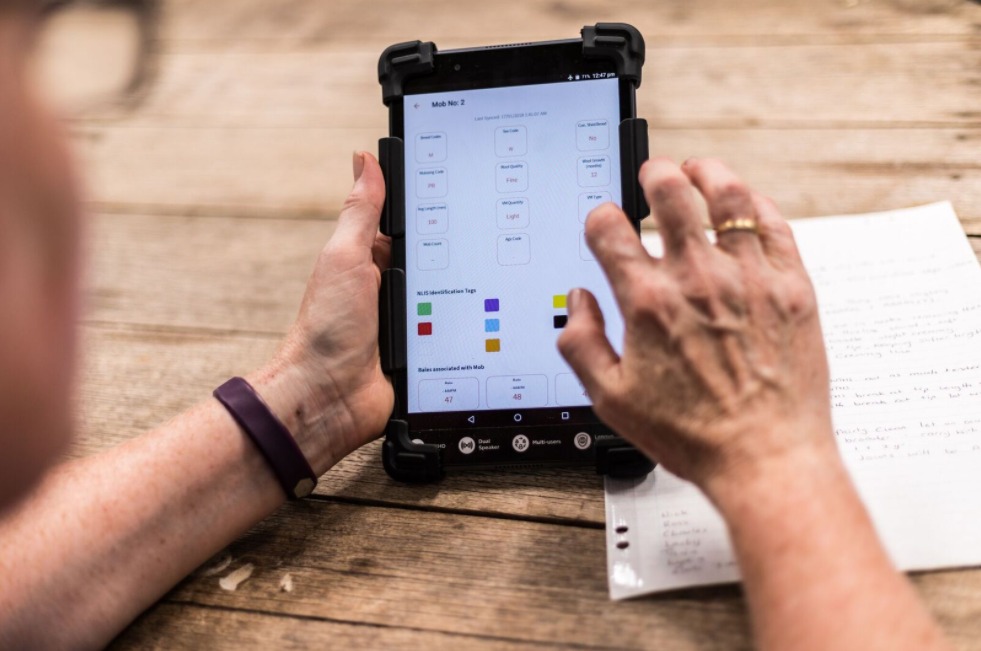
More than 10,000 clip specis were created on WoolQ’s eSpeci, but key targets were not met.
AUSTRALIAN Wool Innovation’s online services and trading platform WoolQ has failed to meet important grower uptake and transaction targets, according to AWI’s 2019-20 annual report.
AWI had an operating target of an increase of 1700 wool growers adopting the WoolQ grower tools in 2019-20; however, only 479 users signed up during the financial year and 158 business accounts were created.
As at 30 June 2020, WoolQ had 2488 profile registrations, of which 1408 were grower profiles.
AWI also had a target of 2 percent of all Australian wool traded via the WoolQ Market tool for the year; however, only 939 bales were traded on the platform, despite the creation of 32,437 bales on the platform.
Assuming an average bale weight of 175kg, those 939 bales equated to 164,325 kilograms, or about 0.06pc of the 283 million greasy kilograms of wool estimated to have been produced last financial year.
This meant that WoolQ has achieved less than 3pc of its operating target of about 5.66 million kilograms of wool traded in 2019-20.
An in-depth report on WoolQ in the report said there had been 2488 registrations and 10,332 eSpecis created. New enhancements being implemented included a market bulletin offer board available to growers 24/7, a tender service to allow brokers to offer specialty catalogues and a broker management service. AWI said it was working with a number of brokers who are looking to provide a more streamlined service to their growers at a lower cost.
AWI has considered WoolQ ownership options
WoolQ has come under significant criticism recently with suggestions that AWI spending on WoolQ be stopped and the platform be sold because it was not addressing a wool-selling system market failure and was competing with existing online and open cry auction systems. The low uptake of WoolQ in the past year occurred despite the breakdown of the Talman software system used in the open cry auction system and the COVID-19 pandemic, which prompted the industry to undertake trials of various online systems, including WoolQ, AuctionsPlus and Zoom.
The annual report also showed that AWI spent more than $640,000 on various WoolQ projects, including $201,303 paid to Port Jackson Partners Limited for WoolQ ownership options evaluation.
Australian Wool Growers Association director Robert Ingram said the AWI annual report WoolQ figures reinforces the grower requests over the last two years for abandonment of the project.
Mr Ingram said the WoolQ ownership options report or its conclusions should be released by AWI, or AWGA will be seeking its release under Freedom of Information.
“We’ve been trying to bring this to the attention of the industry for the past two years.
“AWI is like a dinosaur; dinosaurs didn’t have ears, they can’t hear.”
After AWI’s Shanghai-based Country Manager in China, Jeff Ma, in a recent AWI’s podcast, said the company has spoken to a lot of Chinese trade partners and top makers about WoolQ. Sheep Central asked last week if AWI is assessing whether there is any potential interest in China or the global wool trade to buy WoolQ or partner with AWI in developing it and AWI’s chief operating officer John Roberts said Chinese top makers had a long-held interest in WoolQ, but discussions in China “should not be misinterpreted as anything other than consultation.”
AWI also paid $243,359 to various entities for WoolQ platform maintenance and support, and $198,732 to four entities for strategic advice.
WoolProducers Australia chief executive officer Jo Hall said obviously the results reported on WoolQ in the AWI annual report are disappointing, especially for wool growers who have had to pay significant amounts of levy for this project.
“Our policy regarding WoolQ (formally the Wool Exchange Portal), was that there had to be buy-in from industry supply chain partners for WoolQ for it to be a success, which simply did not happen.”
“This disappointment is further compounded by the fact that AWI continue to emphasise that their revenue has been severely impacted this year, however expenditure on WoolQ has continue unabated in the face of continued poor results,” she said.
AWI’s 2019-20 annual report showed that its revenue for the year had dropped to $69.169 million, from $101.15 million the previous financial year, with wool levy income dropping from about $68.07 million to $37.77 million. AWI’s expenditure was cut from $99.37 million in 2018-19 to $77.13 million in 2019-20.
Click here to read AWI’s annual report and for more information on the AWI virtual AGM on 20 November, 2020.

While AWI is funded by a compulsory wool tax, it should not be competing with privately-funded companies.
WoolQ has failed to make a positive difference to the wool market during the US/China trade wars, which started in 2019, during the ransomware disruption in 2020, and during the COVID market disruption in 2020. AWI should stop wasting growers’ hard-earned money and work with industry, not compete with it.
I have some WoolQ questions:
1. Is one of the major goals of WoolQ to gain ownership of the wool growers’ sales data for and on behalf of wool growers?
2. Does this data have significant commercial value?
3. Is wool growers’ sales data currently owned by AWEX?
4. Is AWEX largely foreign-owned?
5. Would WoolQ increase the slice of the cake for the wool grower?
6. Why has it taken brokers via AWEX so long to invest in electronic wool shed specis etc?
7. Is WoolQ all bad?